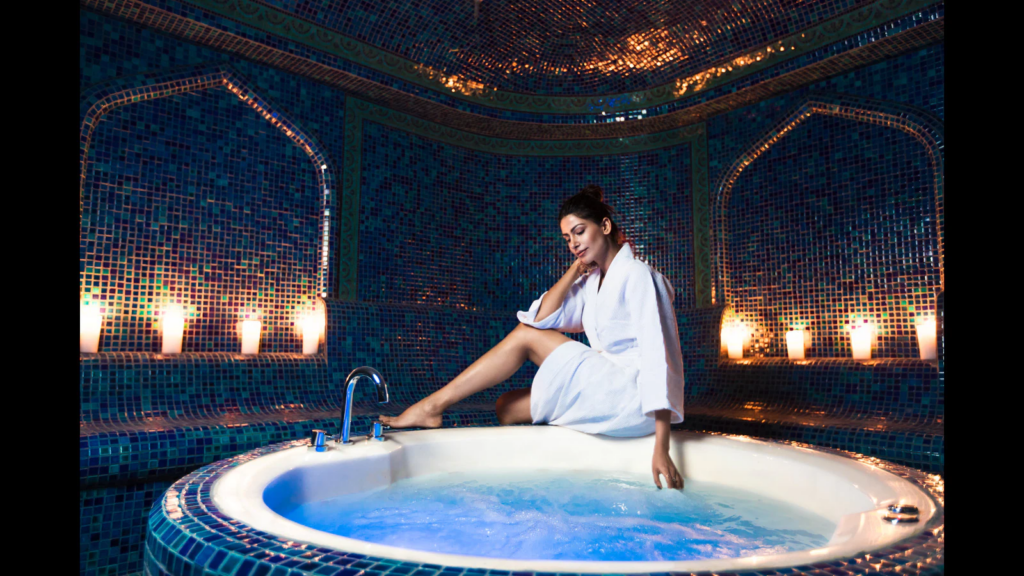
The Moroccan hammam, also known as the Turkish bath, is a time-honored tradition that offers a unique and deeply relaxing bathing experience. Rooted in both culture and history, the hammam is not just a means of cleansing the body; it’s a ritual that nourishes the soul. Let’s delve into the world of hammam bathing and explore the elements that make it a cherished practice.
1. The Hammam Setting:
The hammam is a communal bathhouse with a distinctive architectural design. It typically consists of a series of interconnected rooms with varying levels of heat and humidity. These rooms include:
- Caldarium: The hottest room, featuring steam and high humidity.
- Tepidarium: A warm room for relaxation and socializing.
- Frigidarium: A cool room for cooling down and refreshing after the heat.
- Massage Room: Where visitors can receive traditional massages and exfoliation treatments.
2. Traditional Attire:
When visiting a hammam, it’s customary to wear a special garment known as a “pestemal” or “fouta.” This lightweight, cotton wrap is used for modesty and comfort. It allows visitors to move freely between the various chambers of the hammam.
3. Exfoliation:
One of the highlights of the hammam experience is the exfoliation process. Visitors are typically scrubbed vigorously with a special glove called a “kessa” or “kese.” This scrubbing removes dead skin cells, promotes circulation, and leaves the skin incredibly smooth.
4. Soap and Products:
Moroccan black soap, known as “beldi soap,” is often used during hammam bathing. It is a natural, olive oil-based soap infused with eucalyptus, which helps soften the skin and prepare it for exfoliation. Other products like clay masks or henna may also be used for hair and skin treatments.
5. Social Connection:
The hammam is not just about cleansing the body; it’s also a social experience. Families and friends often visit the hammam together, creating a sense of community and relaxation. Conversations flow, and the atmosphere is one of camaraderie.
6. Mental and Physical Benefits:
Hammam bathing provides numerous health benefits, including stress relief, improved circulation, and detoxification through sweating. The deep exfoliation and cleansing leave the skin glowing and rejuvenated.
7. The Scent of Eucalyptus:
The use of eucalyptus-infused products in the hammam creates a distinct and invigorating scent. Eucalyptus is known for its aromatic and respiratory benefits, enhancing the overall experience.
8. A Time-Honored Tradition:
The hammam has been an integral part of Moroccan culture for centuries. It’s not just a cleansing ritual but a cherished tradition that has been passed down through generations.
9. Variations Across Regions:
While the Moroccan hammam is widely recognized, variations of this bathing tradition can be found across the Middle East, North Africa, and even in parts of Europe and Asia. Each region puts its unique twist on the hammam experience.
10. Modern Hammams:
In addition to traditional hammams, many modern spas and wellness centers offer hammam-inspired treatments. These contemporary hammams provide a luxurious and tranquil atmosphere for relaxation and self-care.
Visiting a Moroccan hammam is not just about cleansing the body; it’s an immersive journey that revitalizes both the body and the spirit. The age-old tradition of hammam bathing offers a unique blend of culture, community, and self-care, making it a truly enriching experience for all who partake in it.



